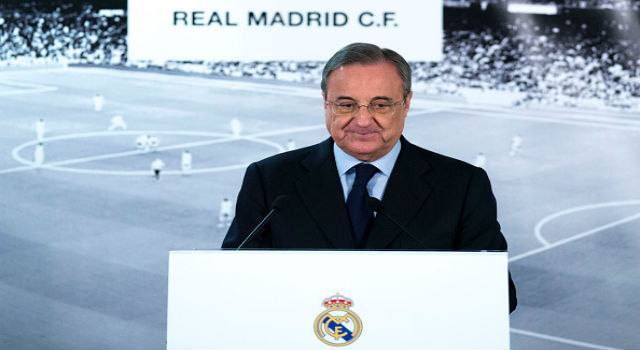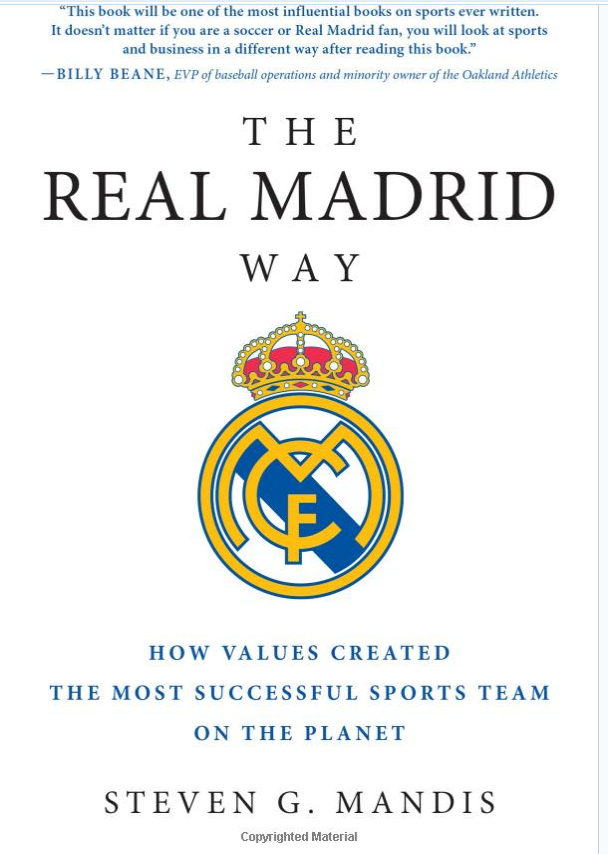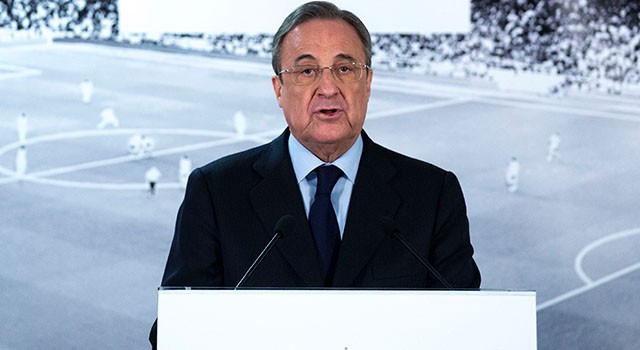We recently spoke about an interesting book that every ‘madridista’ should read: “The Real Madrid Way”. The book and its author analyzed “how values created the most successful club in the world”. We have interviewed the author, Steven Mandis, who is a former Goldman Sachs employee. He has given us his opinion about everything around Real Madrid and how the club can be improved in the next few years:
Question (Q): Why did you choose Real Madrid as a topic for your book?
Answer (A): I did not intend to write about Real Madrid. A fascinating and lucky chain of events ultimately led to the project. A friend of mine and his father (who is on the Board of Real Madrid) introduced me to one of the key executives of the club because they thought we would enjoy each other’s company and maybe he could guest lecture at one of my Columbia Business School classes. After meeting the executive, Carlos, and essentially asking him “what is the most important element of success for a sports team – money? talent? data analytics?”, I was surprised at his answer. He said it was the values and expectations of the community / socios. After the book and movie ‘Moneyball’ and his engineering and executive background and proficiency with numbers, I was waiting for him to say data analytics. After learning more, I felt it would be interesting to study the club in depth. I couldn’t believe they said yes. I didn’t know much about Real Madrid or European football. I don’t speak Spanish. But I think my outsider status, business and academic background (not being in the media or sports industry), and their ability to review my previous book about Goldman Sachs to understand my approach — all helped.
(Q) What is Florentino Pérez role in the success of Real Madrid?
(A): Obviously, Florentino is very important to the history and success of Real Madrid. However, it is a talented and dedicated management team and board that executed a tremendous turnaround, and it was Real Madrid’s history that served as the inspiration. People miss the team aspect of who had to execute a strategy and vision. Clearly, Florentino was the visionary (and Jorge Valdano and Jose Angel Sanchez and others had a part). Florentino believed that the key to success was for the values and expectations of the community to be reflected by the club overall and played out in the pitch. Bernabeu’s 1955-1960 era with Di Steffano was the inspiration. Many just look at the stars on the pitch. But Bernabeu was an innovator on how to pay for them and how to develop the passion and connections to a global audience. This is important because Real Madrid is not backed by a billionaire or corporation that can fund losses. So on the pitch and off the pitch are very much interconnected. Florentino understood this. Also, I discovered the financial situation was so precarious in 2000 Florentino personally guaranteed almost 150 million euros to afford the necessary investments to implement the vision. So Florentino was obsessed to save the club and had deep conviction in the strategy.

(Q) Despite we can Real Madrid is the most successful football club in the world, the club hasn’t achieved this success in the football pitch, failing to win La Liga since 2012. Why do you think this has happened?
(A): Real Madrid has the most trophies overall, including 11 Champions Leagues/European Cups and 32 La Liga trophies. So on the pitch they are the most successful. Off the pitch, they are the most valuable sport team and have the most revenues. I know Forbes now just ranked them #2 after the depreciation of the Euro, but if you speak to experts (as described in my book) you will understand why Real Madrid is worth significantly more than Forbes reports. Experts that I spoke to place the value of the club close to $6 billion.
As for winning, there are a few things to note. First, today talent has never been narrower among players. In his book Sports Equation, Michael Mauboussin points out that the difference between first place and twentieth place in the Olympic Men’s Marathon in 1932 was around 39 minutes, while in 2012 it was 7 minutes. In Rio, it was 6 minutes. People are blinded with huge sums being paid for the marginal difference because clubs are looking for any statistical advantage. But do you ever notice when a star player is not 100%, they appear “average.” This is because the difference is small, so a small issue (from personal distractions to mental fatigue to physical fatigue to getting back into shape from injury etc) can bring the player to average. Second, Real Madrid follows the passion, values and expectations of the fans – which to see beautiful, attacking, elegant football. Real Madrid fans want to see the best players in the world take “paint” (the ball) and paint a beautiful painting on the canvas (the pitch) for 90 minutes. Like painting, Real Madrid’s style is artistically improvised. This improvisation requires players to play together very often to know what each otherwise do. Clubs that have a system where players’ roles are defined can more easily rotate players or replace injured players. Teams with a system also have performance issues in new line ups but not as statistically meaningful as a team relying on improvisation. The issue is that there is something that I call the “too tired effect.” Players do need to be rotated to keep fresh for the end of the season. This places Real Madrid at a statistical disadvantage because the players need to play together more for effective improvisation. It can be a slight negative, but something that I learned is that 1 goal in one game switches your narrative – in many seasons Real Madrid lost the Spanish League by 3 points or less – meaning one goal changes the outcome of one game which changes who wins and who loses La Liga. One offsides call / or non call, one penalty given or not given, one ball hits the post and goes out / in – this literally could have determined the champion last year. Also, this too tired effect is pronounced because football is a highly interconnected game with a series of passes typically leading to a goal. Therefore, if a player is slightly slower or can’t jump as high as his teammates expect that the few precious opportunities are lost by inches. Lastly, you need to understand luck. In the book The Numbers Game, Sally and Anderson disclosed that the winning percentage of a team favored by bettors won 66% of the time in basketball and only 50% of the time in football/soccer. In basketball there is a shot clock to ensure that both teams have plenty of opportunities to score and defend. Therefore, typically the better team will win with more opportunities to show they are better. Football, has no shot clock and fewer opportunities. So a non favored team can sit back and defend and waste time, reducing the opportunities – and maybe get lucky with a penalty or missed defensive assignment. In addition, most goals are scored by random (can’t be often replicated) events (e.g. a lucky bounce or deflection). Add all of this up, and it is what makes football so compelling to watch.
Lastly, with so many matches, club tournaments, international matches, qualifying and tournaments I think that Real Madrid, the coaches and players need to prioritize to the values and expectations of the community. My research indicates for various historical and heritage reasons (e.g. help found FIFA and European Cup), the Real Madrid community sees itself as more European/Global and values winning the Champions League / European Cup (with Real Madrid’s unique values / style) the most. Obviously, everyone wants to win all trophies but every organization has to have priorities. So all things being equal, my guess is that decisions are made to align with the community’s goal.

(Q) Have Barcelona copied ‘the Real Madrid Way’ with the signings of Neymar, Luis Suárez, etc?
(A): Real Madrid and Barcelona are both different and extraordinary and, in many ways, need each other to define their communities and measure and push themselves. The teams are starting to have more similarities in certain aspects. In most businesses, copying what works regularly happens – and football is no exception. The number and quality of Real Madrid’s academy graduates are higher than people perceive it. Barcelona has fewer academy graduate starters than people perceive. In both, academy graduates play important roles.
(Q) You said in the book, “chasing the most talented (and most expensive) players can be a recipe for a winning record, but also financial disaster”. Is Florentino Pérez model sustainable?
(A): I believe the objective is to have a sustainable economic – sport model to ensure that the club always stays a club owned by socios. You need to understand this in order to understand organizational decision making and strategic decisions. I believe this is the element that is most overlooked when people comment on the business side or the pitch side. I think the fact that the club is so transparent (including letting me publish what I found) gives you a sense that they are confident that the culture, history, values of the club can’t be replicated or copied (while data analytics and marketing strategies can and are). So Real Madrid’s competitive advantage is the values and passion in its fans hearts and souls. For Real Madrid it starts and ends there.
(Q) What are the challenges for the future?
(A) We will see if the Real Madrid community (including fans and players) accepts rotations. Rotations keep players fresh. Also, the fewer minutes on the pitch then the lower statistical chance of being injured or being too tired which can lead to injuries. A coach with the qualities of Zidane helps because he has the authority and credibility to have some leeway with the community in his decisions.


